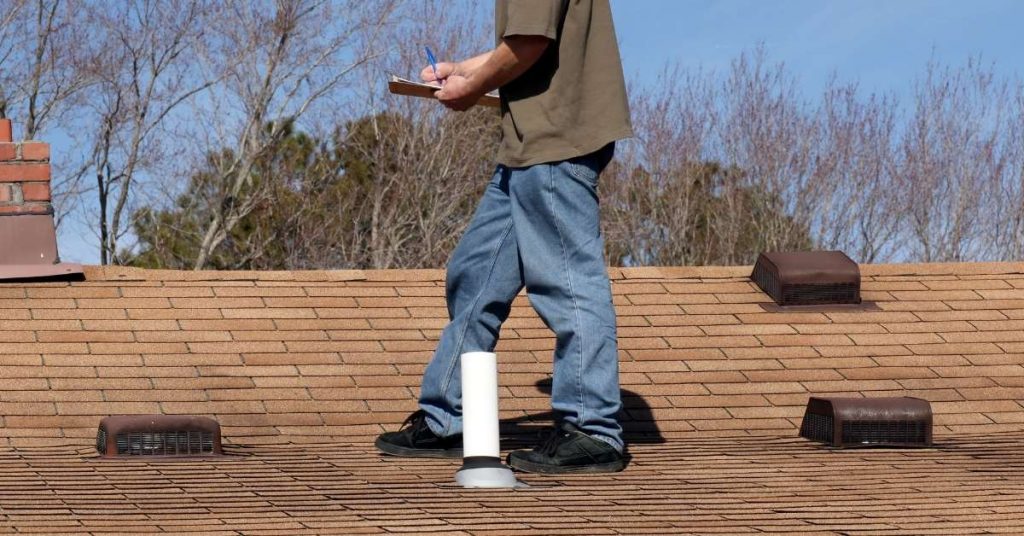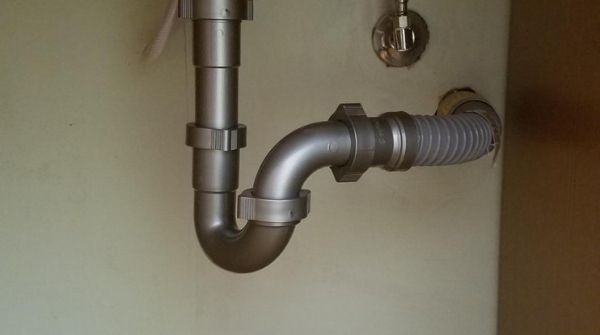
A clogged plumbing vent can disrupt the proper functioning of your plumbing system and may lead to various issues. Here’s a brief summary of signs that indicate you might have a clogged plumbing vent:
- Slow Drainage: If you notice that water drains slowly from multiple fixtures in your home, such as sinks, toilets, or showers, it could be a sign of a clogged vent pipe.
- Gurgling Sounds: You might hear gurgling or bubbling sounds coming from your drains when you run water. These noises can occur when air struggles to enter the plumbing system due to a blocked vent.
- Sewer Odors: A clogged vent can prevent the release of sewer gases through the vent stack, causing unpleasant odors to emanate from your drains or fixtures.
- Backed-Up Drains: In severe cases, a clogged plumbing vent can lead to water backup in sinks, toilets, or tubs, indicating a significant obstruction in the vent stack.
- Toilet Flushing Issues: A blocked vent can interfere with the proper flushing of toilets. You may notice weak flushes, slow refilling of the bowl, or the toilet bowl water level rising when other fixtures are used.
- Air Bubbles in Toilet Bowl: When you flush the toilet, you may see air bubbles rising in the toilet bowl, which can be a sign of venting problems.
- Drainage Problems After Heavy Rain: A clogged vent may become more noticeable during or after heavy rain, as it can exacerbate the venting issues.
- Multiple Fixture Issues: If multiple fixtures in your home are experiencing drainage problems or unusual behavior simultaneously, it’s likely related to a common venting issue.
- Unexplained Water Hammer: Water hammer, which is a loud banging noise in your plumbing system, can occur if the venting system is compromised, leading to sudden changes in pressure.
- Insect or Rodent Infestation: Clogged vents can provide an entry point for insects or rodents seeking shelter in your plumbing system.
Signs of a Clogged Plumbing Vent
A clogged vent stack communicates through the drains. If you find a pattern from your kitchen sink, bathroom sink, toilet, shower or bathtub drain to the washing machine then you likely have a clog in your vent.
The following are the telltale signs of a clogged plumbing vent:
1. Gurgling Drains
With gurgling drains, you might notice one or all of the following:
- Bathtub/shower drain gurgling when the toilet if flushed.
- Sink drain gurgles when the toilet is flushed.
- Toilet bubbling when flushed.
- Sink drain gurgles when the washing machine or tub is draining.
Gurgling from drains is an indication of 2 things. Either air is flowing out of the P-trap, or out of the P-trap. Every drain in your house has a P-trap.
A P-trap is the U-shaped part of the drain, which also looks like an inverted P that is installed below each fixture with a drain. If you don’t know how a P-trap looks like underneath your bathroom/kitchen sink or at the bottom of the toilet from the side.

P-traps allows for a little amount of water to be held, which acts as a barrier preventing sewer gases from coming up into the house. If the vent stack is clogged, air pressure builds up inside the drainpipe and is forced out of the drain traps in form of air bubbles.
The gurgling sound is usually caused by the trapped air/gases as they forces their way through the water in P-trap.
When water is dumped through a drainpipe with a clogged vent suddenly, it creates a vacuum inside the drainpipe as it flows out. Since a vacuum cannot exist in the pipe the water in the closest drain P-trap is sucked inside the drainpipe creating the gurgling sound.
Related post: How to fix a gurgling toilet
2. Slow Draining Fixtures
When your bathtub, sink or washing machine takes too long to drain, it is a sign that there is a restriction in the drainpipe. This restriction is usually caused by a partial clog in the drainpipe, or negative air pressure as a result of a clogged plumbing vent.
A weak flushing toilet is also another symptom of a clogged vent. Just like the example with the bottle, a vent is supposed to introduce air into the drainpipe, which helps it drain quicker. When that does not happen, your fixtures will drain sluggishly, often causing other drains to gurgle in the process.
3. Sewer Smell in the House
A sewage smell in the house (usually in the bathroom or kitchen) is usually as a result of an empty P-trap. When a P-trap is empty, sewer gases flows through it unrestricted since the barrier created by the water has already been broken.
When for instance you flush the toilet and you have a clogged vent stack, a vacuum will be created inside the drainpipe which will result in the water in the bathtub drain trap being sucked in. While that is happening, a gurgling sound will be heard.
The above can also happen with the bathroom sink when you drain the bathtub/shower drain, or when you flush the toilet.
If there is a sewage smell in your house and you can hear the tub/shower drain gurgle when you flush the toilet then you surely do have a clogged vent stack. Sometimes you have all the 3 signs (slow drains, sewer gas smell and gurgling drains) at the same time.
How to Unclog It
Unclogging a plumbing vent is quite easy, if you are not afraid of heights. Since you will need to climb to the roof of your house, it is important to make sure that you are working safely, by placing the ladder on a level surface, and at and angle to the house.
It is also a good idea to have someone hold down the ladder for you as you climb to the roof of the building. Unclogging a vent stack actually is better done by 2 people.
To unclog a vent, you will need a garden hose, plumber’s snake, screwdriver and flashlight. Here is how to proceed:
- Climb to the roof of the house using a ladder.
- Locate the vent. In newer houses the vent is made of a 3-inch PVC pipe but in older houses it could be made of steel.
- Remove the cap at the top of the vent using the screwdriver.
- Using the flashlight, try to see if you can see the clog from the top of the vent.
- Insert the garden hose in the vent until you encounter the clog. Probe the clog with the garden hose, in a bid to break it down. Have someone turn on the water to the garden hose to help dislodge and wash down the clog.
- If the clog won’t budge, upgrade to the plumber’s snake. Feed the cable down the vent until you encounter resistance. Lock the cable and start cranking the handle. When the cable is really tight and even starts to twist, you have grabbed the clog. Pull the cable straight out and remove the clog. Push the cable down the vent once again just to be sure there are no more clogs.
- Have someone flush a toilet in the house. If the toilet is flushes strongly without bubbling and gurgling noises from the bathtub drain then the plumbing vent is unclogged.
- Put the vent cap back on and climb down safely.
If you would like to watch a You Tube video on how to clear a clogged plumbing vent then find it here.
And that is how to unclog a plumbing vent. If your plumbing vent is not clogged but the problems remains, you either have a clogged sewer line, or the drains are not vented properly.





